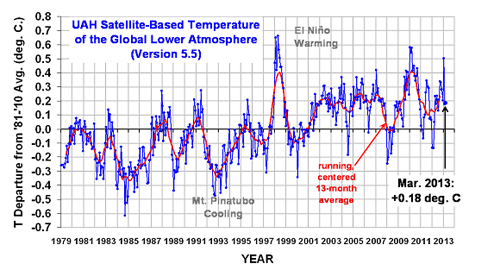Extreme Weather 2013-04-16

This blog writing in January "Take note that there are warning headlines for tomorrow - there's an extreme weather with of strong winds 25m / s combined with rain and snow. Currently this part of the climate change effects that it becomes more often and stronger extreme weather is a sign of the times ., it becomes more or less snow, extreme precipitation or extreme drought, storms, cold and heat ... (the writer thinks not only in Sweden)
How do we equip the country and local communities to extreme weather?
One way is to allocate capital to take once it applies, in Västervik the issue has NOT been recognized by the budget. But the Green Party in Oskarshamn came away with the council on a small but symbolic deposition on climate account, better. "
But remember that it was always even and good weather earlier according to some!
SMHI writes "On March 12, 2012 blew storm WNW 26 m / s at Bjuröklubb. Since then there has not been a storm in Swedish coastal waters., So when we passed on April 12 come up in 396 storm-free days., It is a new record! ". http://www.smhi.se/nyhetsarkiv/rekordlang-period-utan-stormar-1.29893
But certainly there have been storms, it is enough just to name Gudrun and Katrina.
How was it before? A mans memory is so short.
See the following link for examples:
1958: End-of-Winter Snowstorm Blasts East Coast With Hurricane-Like Conditions
1958: Baltimore Crippled By 16-Inch Snowfall
1958: 182 Die In 26-State Cold Wave, Eastern U.S. Hit With Record Lows
1958: Florida Shivers From Record Cold Winter
1958: Devastating Snow Blizzard Burys New England - 45 Dead
1958: "Record Breaking Storm Rakes Western Prairies" - Blizzard & Tornado
1958: Britain Suffers Worst Arctic Blizzard In Decade
1958: "Huge Ice Gorge Threatens To Cause Floods"
1958: Canada's Prairie Drought Called Disaster
1958: "Severe Drought In China" - Worst In 20 Years
1958: Violent Hailstorm Causes Havoc In Australia - Hailed For 15 Minutes
1958: Northwest U.S. Suffers With Bad Heat Wave
1958: Iowa Torrential Rainfall - 13 Inches, 5 Dead, 12 Missing
1958: "Forest Fires Plague Pacific Northwest" - Tinder-Dry Environment
1958: B.C. Heat Wave Disastrous, 280 Forest Fires Burning
1958: "250 Fighting Glacier Park Forest Fire"
1958: "Giant Iceberg Spotted In The Atlantic"The link above has a continuation. It was too long to include everything here.

Luckily, we are not troubled by this extreme weather that we call tornadoes. USA got everything. But is it increasing?

We can also look at the energy of tropical storms. According to Dr. Ryan Maue article
"Recent historically low global tropical cyclone activity" in Geophysical research Letters
Abstract: Tropical cyclone accumulated cyclone energy (ACE) has exhibited strikingly large global interannual variability during the past 40-years. In the pentad since 2006, Northern Hemisphere and global tropical cyclone ACE has decreased dramatically to the lowest levels since the late 1970s. Additionally, the global frequency of tropical cyclones has reached a historical low. Here evidence is presented demonstrating that considerable variability in tropical cyclone ACE is associated with the evolution of the character of observed large-scale climate mechanisms including the El Niño Southern Oscillation and Pacific Decadal Oscillation. In contrast to record quiet North Pacific tropical cyclone activity in 2010, the North Atlantic basin remained very active by contributing almost one-third of the overall calendar year global ACE. http://onlinelibrary.wiley.com/doi/10.1029/2011GL047711/abstract
Check also Ryan's charts with storm frequency.

A very big storm. See the comparison with America's land area.

In the center of a storm is the low pressure. Tip is also here in first place with a pressure of 870 hPa (hecto pascal), which is 870 millibars or 652 mmHg. The lowest pressure ever measured.
List of other major storms:

http://en.wikipedia.org/wiki/List_of_the_most_intense_tropical_cyclones
Also read about Bhola cyclone that struck Bangladesh in 1970. Up to 500 000 deaths. I remember when it was on the news, awful. Read on: http://sv.wikipedia.org/wiki/Cyklonen_Bhola